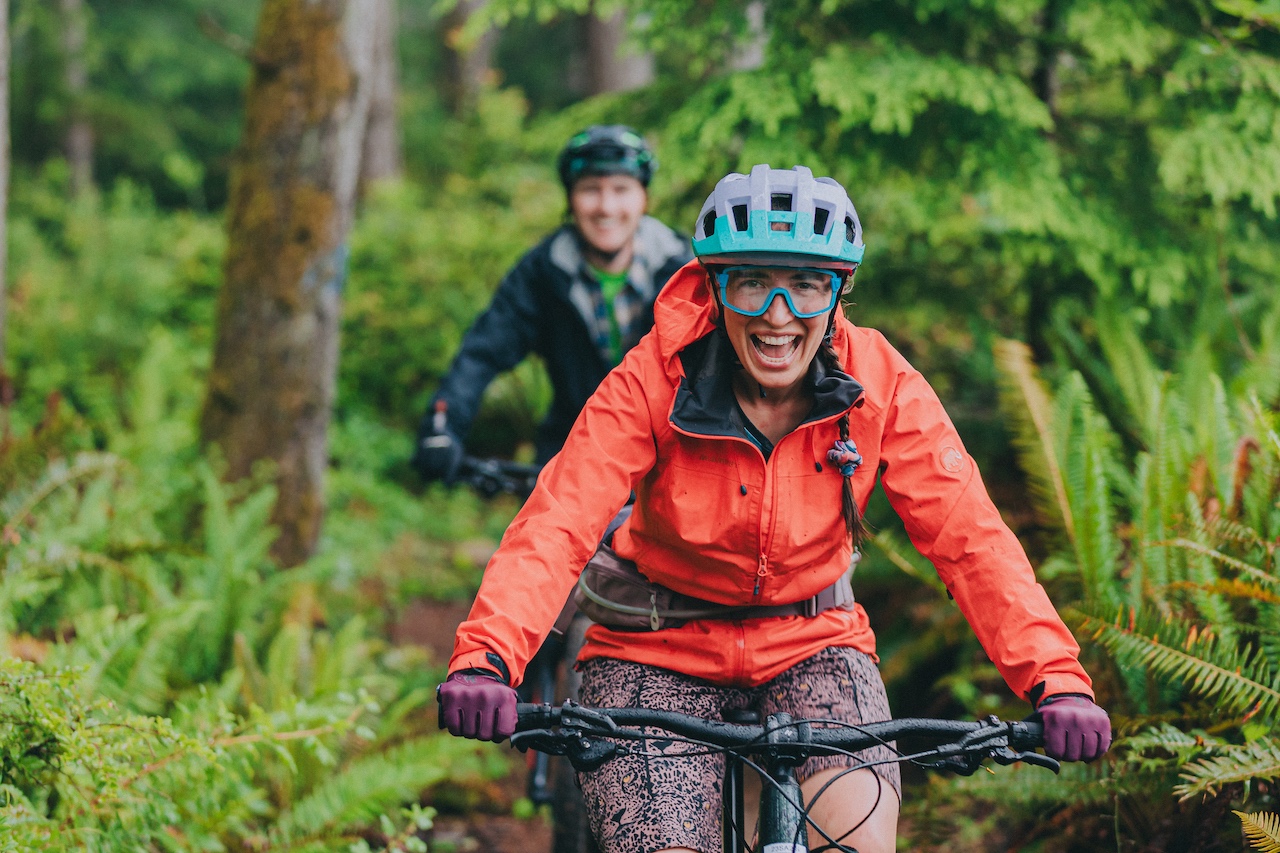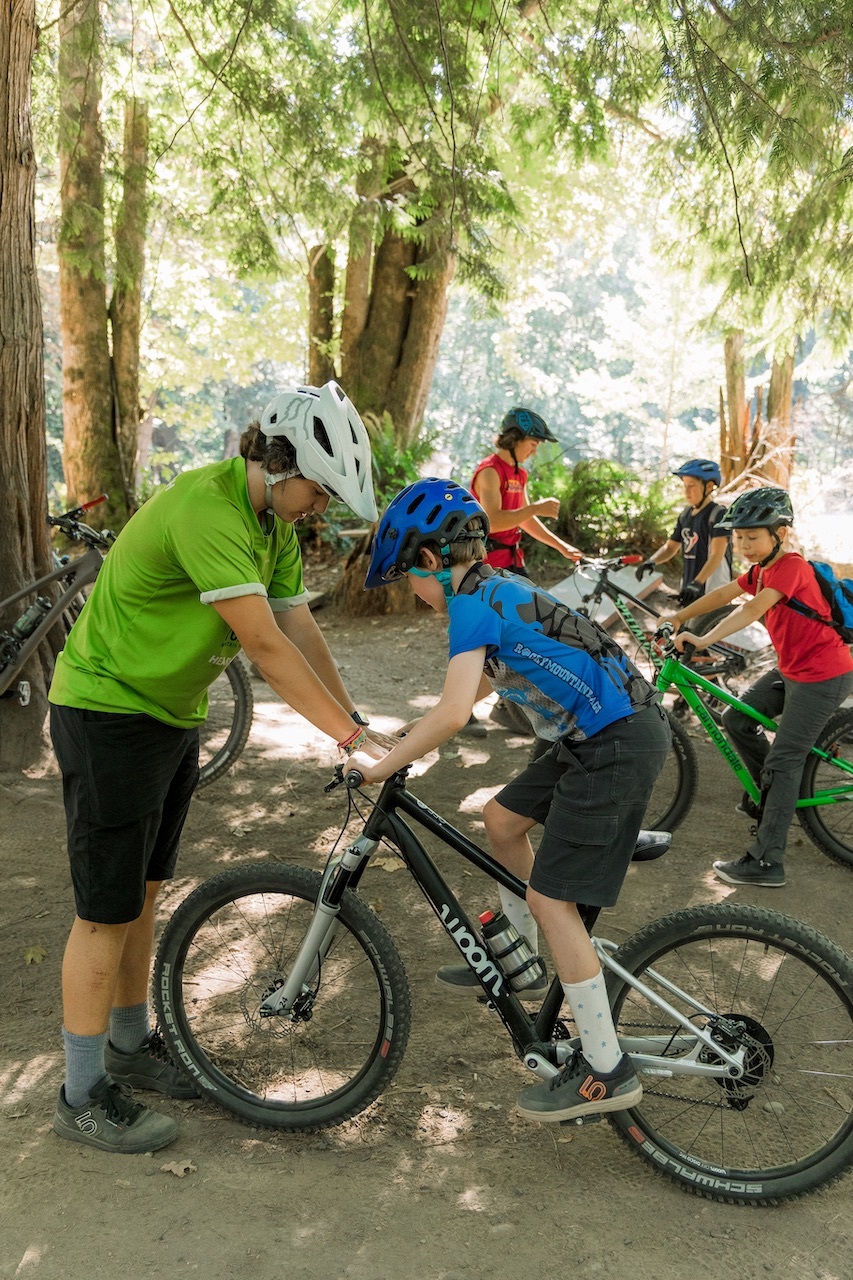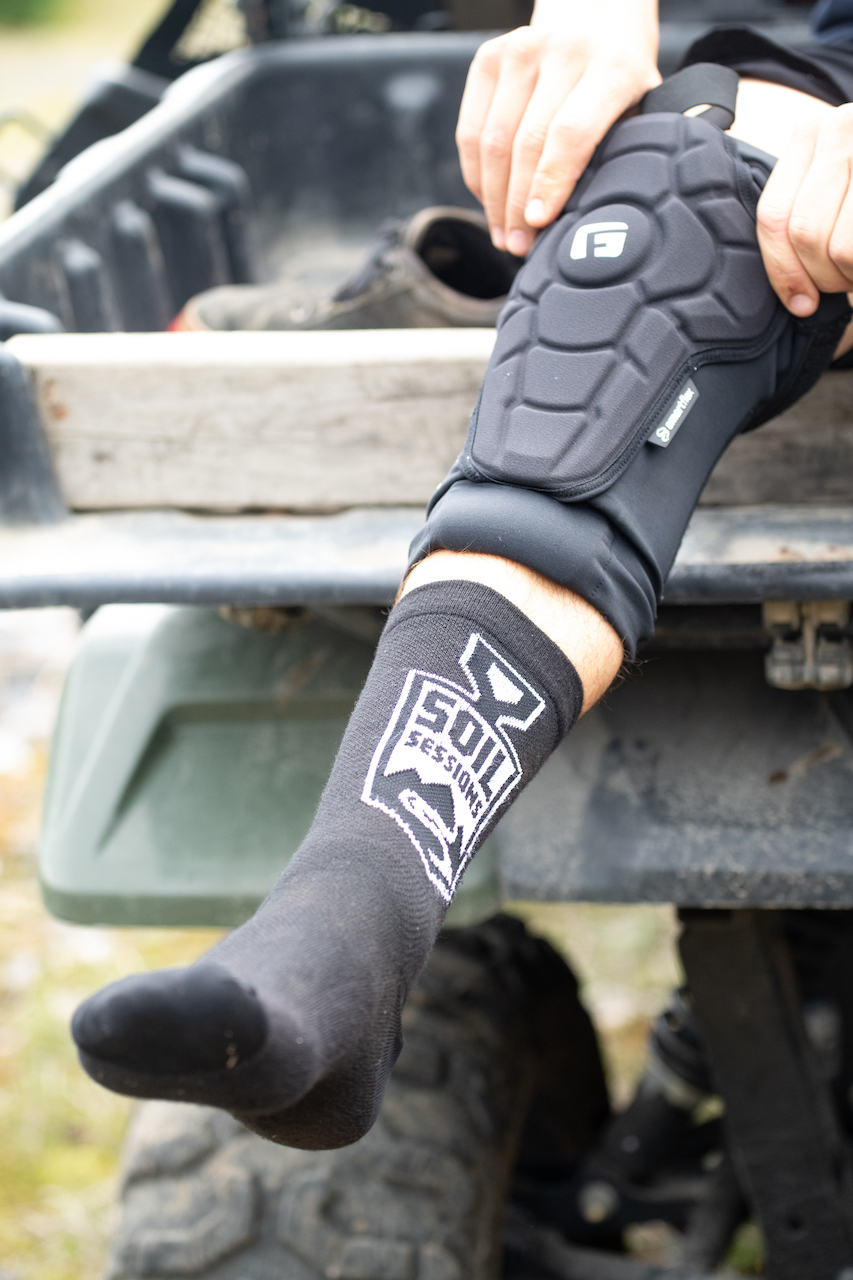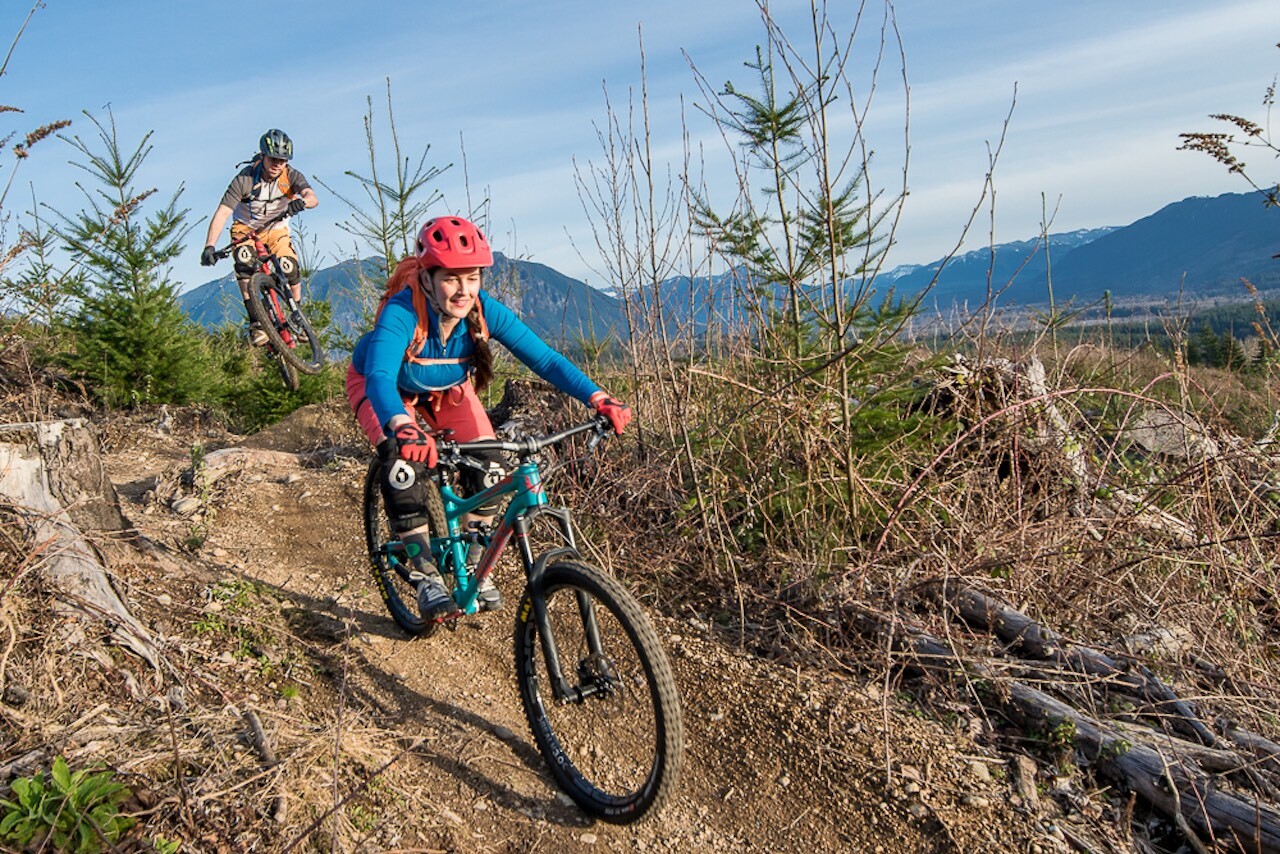Safety First, Then Teamwork
With the 2024 Spring Riding Season underway and the weather on our side, we at Evergreen thought it would be a good idea to catch up on what it means to be safe out on the trails.
More people than ever are out riding bikes! The numbers don’t lie. Evergreen is absolutely stoked to see the increase in ridership and community but with more new riders out in the woods, there are a few things we’d like riders old and new to think about.
Consider this a fresher and a re-fresher!
Whether it's an encounter with an animal, poor weather or riding conditions, an accident out on the trail (nearly every rider I know that takes this sport to heart, including me, has broken a bone or a gnarly story to tell; it just happens. Last year I rushed a rider to the hospital for a broken bone, and pinched artery after a slow rolling accident on a fire road) or just plain getting lost (something that can happen much easier than you think, especially when the sun goes down.) Evergreen wants our community to put safety first this season.
Pre-ride and Bike Basics
Whether you're a seasoned pro or a new rider, getting comfortable on your bike is a great start to putting safety first this season.
Before you venture out onto a trail, and especially if you’re new to the game, make sure you're familiar with how your bike works. We recommend time spent in the saddle around the neighborhood learning the basics or reassessing the spring maintenance needs for your bike. The more time you spend on your bike on a comfortable easy ride, the more natural the movements of turning and navigating obstacles out on the trail will feel.
Once you are ready for a planned ride, the ABC bike maintenance check is a common, basic, easy to do bike inspection. We recommend doing this before each and every ride!
If you're looking for an online tutorial that dives a bit deeper into how to work on your bike, you can head here.
If you’d like to learn to work on your rig in person, our friends at Bike Works in Seattle offer consistent bike maintenance learning opportunities.
If you’d rather have a pro help you, here are a few other local shops we recommend with friendly mechanics that can’t wait to help you out.
And back to the actual riding.
Whether you're that salt and pepper seasoned pro or a new rider we have classes all around the state to help you progress and stay comfortable on your bike. Check out the classes Evergreen offers here.
Out On the Trail
Every Ride
Every ride should start with someone knowing where you’re going. Even on your usual lunch lap something unexpected can come up and if no one knows where to find you, no one knows where to find you in case of an emergency. A charged cell phone or a helmet with fall detection are great things to have, but please do not rely on technology when it comes to your safety.
Whether you’re riding with a group or alone, please let someone know where you're going and about how long you’ll be there.
Trail System Awareness
Each Evergreen trail system works as a part of the entire ecosystem of Evergreen trails.
Understanding what each trail system has to offer and also the unique safety measure you’ll want to consider at each system are vital.
Our own personal trails page located here is a great start to learning about all of the trails across Washington State. Once you stop there, we recommend heading over to Trailforks and downloading the app.
The Trailforks app has become the go-to way for mountain bikers to navigate out on a ride. Once installed on your phone, you’ll be prompted to download individual regions allowing you to use trail maps offline and out of service. Before you head out to explore a new trail system, check out Trailforks.com to go over your route– taking special note of total mileage, turns and directions, and any big climbs you may be faced with along the way.
Use TrailForks and our Trail Guide as a tool for learning trail systems and figuring out how “big” of a ride you’re about to embark on. Keep in mind, though, while Trailforks is an awesome app, it’s worthless if your phone runs out of batter in the middle of a ride. Make sure you’re charged up!
Gear
It's 2024, riders. We don’t need to tell you that a helmet is an absolute must when you're out on your bike. Riding a bike, and crashing a bike, even at low speeds can be dangerous.
There are a lot of options for helmets, though, and a lot of gear options in general. We recommend you check out this guide to figure out what gear will work for you. If you prefer to watch your guides (like I do) head here.
Be prepared. Nothing is worse than having a mechanical issue out on the trail or getting caught in the rain without a proper jacket– so be sure to bring these essential items with you:
- Water
- Snacks
- Rain Shell
- Spare Tube
- Tire Levers
- Pump
- Multi-tool
- Fully Charged Cell Phone
- Navigation Tool (GPS Device/Phone with Trail Forks/onX /Paper Map ect.)
- Basic First Aid Kit.
As you become a more experienced mountain biker, you’ll make adjustments to your “kit” over time to better suit your needs.
It’s also important to take into account how tough your planned route is when deciding what to bring along. And remember, total mileage isn’t always the best indicator of overall ride difficulty. Elevation gain, trail difficulty (gaps, shoots, roots, rocks, rolls), weather, and personal factors like your fitness level and experience play a major role in how long you’ll be out in the elements.
Emergency Preparedness and Contacts
Of course, eliminating all the risks of recreating outdoors isn’t possible. As mentioned above, though, remember to be as safe as you can… To ride with friends; let people know where you’re going, to stay alert; to carry a first aid kit and cell phone.
What to do if you encounter a hurt rider or witness an accident
The first step when encountering an injured rider is to do no further harm. That means remaining calm and assessing the situation before reacting.
A great first aid acronym to remember is DRSABC (Danger, Response, Send for help, Airway, Breathing, CPR)
We’re not emergency experts, but if you’d like to learn more about what DRSABC looks like in a safety situation, check out the link here.
And if you’d like to learn even more about outdoor specific aid, we recommend taking a local REI Wilderness first aid course. They only run 2 to 4 days and might help save you or someone else in a pinch.
And here's another trail specific first aid course.
In case something does happen on the trail and you need assistance beyond what your comfortable doing yourself, here's a list of a WA state emergency resources and alternatives to calling 911:
https://mil.wa.gov/alternative911
Wildlife Encounters
Another thing to consider while you’re out on the trail are encounters with wildlife. With increased human population, increased recreation in our outdoor spaces, and a decrease in wildlife habitat, wildlife encounters are invariably becoming more and more prevalent.
With those considerations you may include bear spray in your gear for encounters with predators and may also consider bringing an EpiPen in your first aid kit for insect encounters. In additon to those precautions remembert to try and ride with a group or a frend. It's more fun anyways!
We also recommend learning about the animals that may habitat in the area you’ll be recreating in. The WDFW has excellent resources on Washington State wildlife.
Here's their page on black bears
And here's their page on cougars
And if you do encounter a predatory animal on a ride and it's not an emergency, please visit this page to find out how to report the encounter.
You might also head over to one of the trail systems pages on Facebook and let other riders know there's an animal in the area.
Finally
Please be safe out there this season! This guide is just that - a guide. Nothing beats being prepared and using your common sense when, not if, something goes sideways on a ride.
Until next time, Keep the shiny side up!





